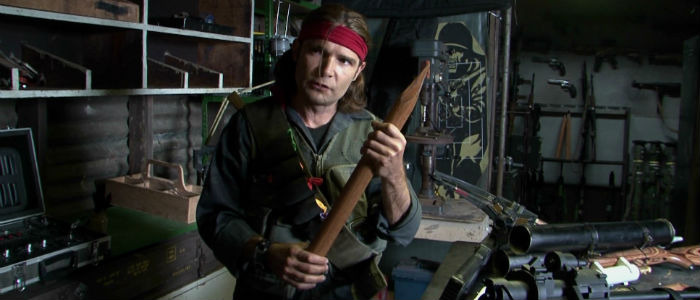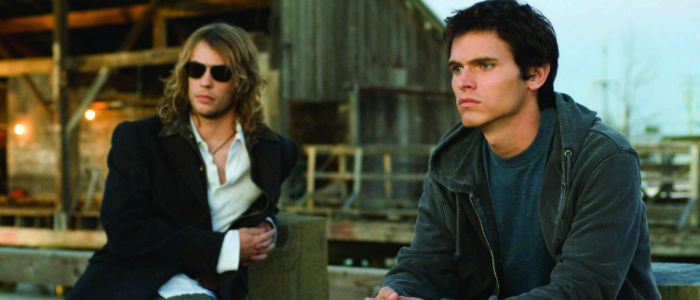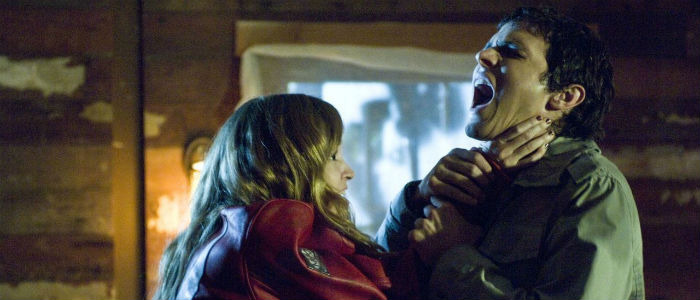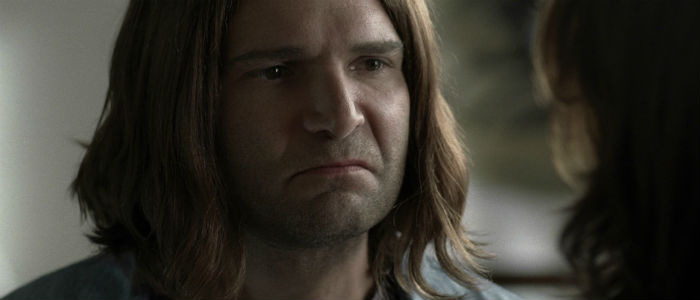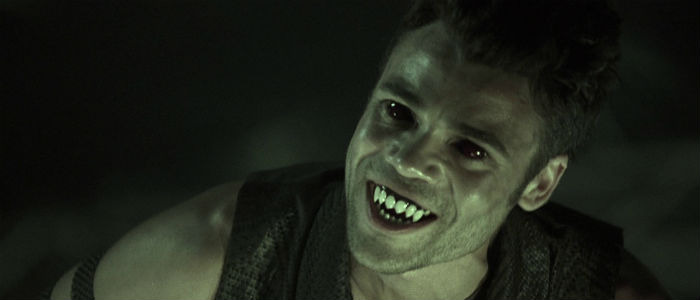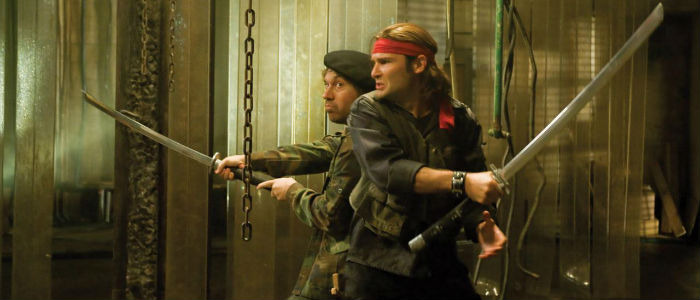Do The Direct-To-Video Sequels To 'The Lost Boys' Suck?
(Welcome to DTV Descent, a series where we explore the weird and wild world of direct-to-video sequels to theatrically released movies. In this edition we bite down hard on two sequels to one of the most popular vampire movies of the '80s.)
Not every movie that deserves a sequel actually gets one, and those that actually get a follow-up don't always deserve it. Hollywood's a mysterious place, a place where box-office dictates content more often than talent and creativity, and one of the unfortunate results of that formula is that sometimes a sequel can be greenlit strictly in the hopes of a quick cash-grab. In the most egregious of those cases, the follow-up doesn't even make it to theaters and is instead aimed squarely at the direct-to-video (DTV) market. The original filmmakers are rarely involved, the level of onscreen talent is typically several rungs down the ladder of fame, and the films themselves are usually forgotten immediately...if they're even noticed at all.
Well, that ends now.
It's time to take a bite out of the two DTV sequels to 1987's The Lost Boys.
The Beginning
The Lost Boys may have struck some as a bit of a trifle back in 1987 – I'm looking at you Roger Ebert – but its staying power over the past three decades has more than proven its worth as a horror/comedy classic. Director Joel Schumacher's star was on the rise, and with St. Elmo's Fire (1985) behind him and Flatliners (1990) ahead, his ability to corral hot, young casts into memorably cool features was quickly proving to be his niche. His tale of vampires partying on the coast of California stars Jason Patric, Kiefer Sutherland, Jami Gertz, Alex Winter, Corey Feldman, and Corey Haim in their prime alongside older talents like Dianne Wiest, Barnard Hughes, and Edward Herrmann, all bringing the fire. It's a fun and funny ride that sees two brothers arriving in Santa Carla with their newly divorced mother only to have their attempt at settling in scuttled by vicious yet stylishly-dressed vampires.
The film takes a playful approach to vampiric lore without ever crossing the line into broad comedy, and while there are plenty of laughs thanks to a sharp script and great comic delivery the darker beats land equally well. Its more dangerous side comes to life through acts of violence, moments of suspense and terror, and a killer saxophone solo (itself part of a still-fantastic soundtrack), and the whole thing ends on the film's biggest laugh. It's a terrifically-entertaining piece of pop entertainment, and Ebert can suck it.
The DTV Plot
Schumacher tried throughout the '90s to get a sequel in motion, but while he eventually moved on to the highs of Phone Booth (2002) and the lows of whatever he's been doing for the past fifteen years, one person never stopped dreaming his own little dream.
Lost Boys: The Tribe (2008) keeps things simple by essentially recycling the original's narrative as a pair of teenage siblings, Chris (Tad Hilgenbrink) and Nicole Emerson (Autumn Reeser), arrive in the small California town of Luna Bay (Vancouver, Canada) to stay with their aunt. They very quickly cross paths with the sleepy town's "sexy" and dangerous vampire crowd, but while Chris plays it slightly cautious by immediately jumping into the shower with a naked local, Nicole is immediately drawn into a relationship with the group's leader, Shane (Angus – wait for it - Sutherland). She's half-turned after drinking some vampire blood, and soon she's acting out and chomping at the bit to bite some chump's bits. Chris turns to the only person in town with experience fighting bloodsuckers – a surfboard shaper named Edgar Frog (Feldman) – and the battle for Nicole's soul begins.
2010's Lost Boys: The Thirst takes a slightly different tact story-wise by putting Senor Frog (Feldman) front and center as the lead in his own adventure. It opens with a flashback set in Washington, DC, where the Frog brothers, Edgar and Alan (Jamison Newlander), defeat a local coven planning to turn a senator into one of their own, but when Alan is forced to drink vamp blood, he escapes into the night. Five years later and Edgar is barely scraping by in the small California town of San Cazador (South Africa) when he gets an offer he can't refuse. A famous author of vampire fiction hires him to rescue her kidnapped brother from an evil DJ (redundant, I know) who's actually a vampire planning to infect thousands at a nearby rave, and only the reunited Frog brothers can stop him.
Look, I said it was a different direction for the story...I never said it was a better one.
Talent Shift
Like almost all DTV sequels, these follow-ups failed to retain any of The Lost Boys' biggest names on either side of the camera. Instead of landing another Schumacher, The Tribe is directed by P.J. Pesce, and if you think he's unqualified to direct a DTV sequel, his filmography would beg to differ — From Dusk til Dawn 3: The Hangman's Daughter, Sniper 3, and Smokin' Aces 2: Assassin's Ball are all his babies. The first film's writer, Jeffrey Boam (The Dead Zone, Innerspace, Indiana Jones and the Last Crusade), was also downgraded with Hans Rodionoff (The Skulls II, National Lampoon's Bagboy) handling script duties on both sequels. I'd say there's a real trend here, but The Thirst director's (Dario Piana) only other credit is a DTV non-sequel.
Acting talent is where it gets slightly more interesting, though, as in addition to Feldman and Newlander one other cast member returns. Kind of. Haim actually pops up briefly for an end-credits cameo in The Tribe. (It's mildly insulting in an "opening of Alien 3" kind of way, but we'll get to that below.) He passed on returning for The Thirst and then died while the film was in production. The Tribe also earns points (or a laugh) for casting Kiefer Sutherland's half-brother Angus as the leader of the fashionable young vampires. He may have gotten their father's height, but it seems to have come with an absence of acting talent.
That's it for notables in either film's cast, but I'd like to give a quick shout out the majority of the supporting players in The Thirst for trying so audibly hard to mask their Afrikaans accents.
How the Sequels Respect the Original
Both films do feature vampires, so that's something. Also, while Feldman's appeal is stretched thin in the second sequel's lead role, he's still a welcome presence in full-on Edgar Frog-mode. His disapproving grunts and occasional one-liners are the rare moments of levity that work across the sequels. Both films also try to varying degrees to capture some of the sexiness that oozes from Schumacher's film, but while he used skill, atmosphere, and performance to deliver within the confines of a PG-13 rating, the sequels go straight for the Skinemax vibe. It's not necessarily un-sexy, but it accomplishes the bare minimum with the laziest of efforts. Here is a topless woman. Here is another. Oh look, a naked behind.
Neither film comes even close to the original's appeal, but The Tribe actually succeeds as a perfectly okay little horror movie. Opening with legendary make-up effects giant Tom Savini facing off against a quartet of surfing vampires is never the wrong choice, and it's quickly made clear that the film won't be shying away from the blood and gore. As with the sex appeal, it's more in your face than nuanced, but by the time the credits roll, The Tribe has at least succeeded in being better than a lot of DTV horror films thanks in part to dialogue gems like this: "Build a man a fire, and he's warm for a day. Light a man on fire, and he's warm for the rest of his life." Finally, it manages to give a nod to the first film while also providing an homage to the most infamous kill scene in Silent Night, Deadly Night, and that's something I will always applaud.
How the Sequels Shit on the Original
Let's start with The Tribe's complete disregard for the Emerson siblings – and by Emerson siblings, I of course mean Michael (Patric) and Sam (Haim) from the original film. The new leads are also named Emerson, and they arrive in town after their parents' death in a car crash. It's never stated explicitly, but the clear assumption to be made here is that Chris and Nicole are the children of Michael and Star (Gertz), which means that Michael and Star are now dead. Blindly killing off beloved characters who fought so hard to live in the earlier film is rarely the right call, but it gets worse with Sam's return mid-credits because he's a damn vampire! He charges Edgar, it cuts to black, and a throwaway line in the third film basically says Edgar killed him. Obviously, this doesn't reach the epic feels of David Fincher killing off Hicks and Newt during the opening credits of Alien 3, but it still sucks.
It's all an unnecessary dismissal of how well the first film captured the value and sense of the importance of family. (That's right, The Lost Boys is a clear inspiration for the Fast & Furious franchise's love affair with the concept.) Schumacher's film made it an integral element with both the humans and the vampires to the point that the bonds between them felt believable and aided in the building of suspense and drama. By contrast, the casts here are thrown together slapdash, and there's no sense that any of them give a damn about the next as characters or performers. The Thirst tries with the return of both Frog brothers, but neither Feldman nor Newlander are up to the emotive task.
The Lost Boys was filmed in Santa Cruz, a real California town, and the sequels' insistence on pretending they're in CA too is rarely convincing. The visible geography and obvious South African accents don't help, but more damning is their small, localized feel. Schumacher brought viewers through tourist spots, downtown streets, and packed piers, and the world felt alive. The danger existing just beneath the surface of a functioning community made it that much more of a threat. The sequels feel removed from reality and from the innocence of small-town America, and both the atmosphere and viewers' concern is lessened for it.
We just don't care about these people or their predicament because there's no connection between siblings, young lovers, or generations. They're all just cardboard cutouts slated to either live or die, and viewers will be hard-pressed to give a damn either way. The scripts try for some of the same meta humor found in the first film with its characters' awareness of vampire lore through movies and comics, but they're either too weak or too forced. The Thirst is cool enough to name drop Robert Neville – but then uncool enough to feel obligated to explain that he's the protagonist in I Am Legend and the last human amid a horde of vampires.
Finally, and this can't be understated, while The Lost Boys' soundtrack remains in play even today as the perfect time travel machine taking listeners back to a time, a place, and specific moments in the film, these two movies think putting a cover of "Cry Little Sister" on repeat will encourage the same love. Surprisingly, despite the song playing a half dozen times alone in The Thirst, it does not.
Conclusion
Both sequels pale beside The Lost Boys, and it's not just because they feature far more blood flowing out of bodies. They're just not all that fun or memorable. Still, The Tribe is entertaining on its own merits and worth a watch for genre fans whether they care about the original or not. There's a good amount of practical gore effects, a few chuckles, and plenty of bare skin for those of you who have yet to discover the internet. The Thirst is far less satisfying for all but the most basic genre requirements, but it's also not utterly horrible. So to answer the question posed at the top of the page – do the sequels suck? – the answer is a hearty and full-throated... kind of.

